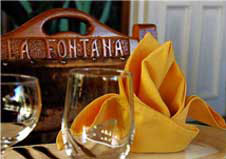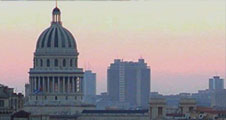Chinese from Manila in Cuba
By: Rafael Lam | Source: CUBARTEHistorically, ordinary people call Asians “Chinese from Manila”, because the first Chinese contingents to arrive in Cuba came from Manila (the Philippine Islands), a colonial redoubt of Spain in Asia. Many died in the crossing, but also many mixed an have descendants with the immigrant groups arrived in Cuba, thus appearing a kind of mulatto Chinese women and men that provided the country with a special touch of “heralds of civilization”, according to Wifredo Lam.
One of the attractions for everyone visiting Cuba is to find a Chinese colony, with their typical China Town (image, their traditional foods and their sharp legend. They ask me almost always: China Town? And I reply: “Yes, China Town. Cuba is composed of Europeans, Africans and Chinese, who provide the Cuban population and culture with a magic touch; if we understand by culture the food, the way to work and live, as Gabriel García Márquez says.
The true story of the Manila Chinese of Cuba has not been told yet; their vicissitudes and struggles are already one century and sixty two years old. They were cornered, in all this period they fought in two wars, they worked with great effort, but their proverbial persistence made them gain the strength of nature. They bear no hard feelings; their matter was to walk and never stop.
Chinese, as we know, worked in all kinds of jobs with amazing efficiency; Chef Gilberto Smith explains to me that Chinese created traditional foods in Cuba that do not exist in any other part of the world, like fried rice. “I should add that the Chinese helped the poorer with their shops by selling products at low prices for the people”, affirms the mulatto-Chinese Chef. Emilio Roig, in one of his articles about the Chinese Doctor, reminds us that he used to tell his patients: “If you have money you pay to me. If you don’t have, you don’t pay. I always give medicine to poor people”. I have personally verified that such food doesn’t exist in any China Town of New York, San Francisco and London. Many of the so-called Cuban traditional dishes can be found in other Latin American countries, but that is not the case of fried rice, a meal consisting of several types of meat and seafood, cebollino, bean sprouts and rice with Chinese sauce. The first Chinese arrived on June 3rd, 1847, in Regla Town, where there should be a monument. Like Africans, native Chinese and Chinese born in Cuba, “will provide us with nothing less than the concept of independence”, Alejo Carpentier wrote in a magazine of UNESCO, in 1981.
Jesús Guanche reminds us that in 1868, with the outbreak of the Ten Years War, the Chinese joined massively the rebel troops; they all joined with great patriotism during the next years of independent fight, performing true heroic deeds, “and they showed great discipline, loyalty and courage. Hence that in the Park of L and Linea Streets in Vedado, there is a monument to those patriots with an epigraph drafted by Gonzalo de Quesada and written with imperishable letters in its pedestal: There was no Cuban Chinese deserter; there was no Cuban Chinese traitor”.
The most typical of the Chinese in Cuba resulted to be its China Town, located in the present Center of Havana, the most peopled and commercial area of the capital city. I remember that when I was a child, I used to visit the China Town with my father, the shops and the houses of the settlers, that Asian environment that made us feel as if we were in the land of the Sky Blue Empire, with dragons and Chinese ornaments included, which were never missing at any Cuban house.
I don’t forget the Chinese cheap restaurants and smells that the King of Cuban Salsa Music, Juan Formell, misses so much; those fishes, chickens, ducks, the smoked pork meat hanging at the shelves, fried pork fat, the fried mixture of carita beans, the water ice creams (made of fruits – mamey, anon, banana- without milk), as Smith calls them.
And what can I tell you about the Restaurant El Pacifico, with its eclectic façade on San Nicolas Street, waiting to be restored, with its five floors – not four – with its traditional elevator, through which we saw the societies, the Chinese wearing undershirts and fanning themselves with their guano fans.
El Pacífico, owned by the Font Brothers, with its two kitchens, its special foods: fried rice, tea, Chinese soup, rice or corn soup (with chicken’s substance and beaten egg), maripositas with noodles, little fried doves, sauces and Chinese condiments, with the Cantonese cookbook appropriate for taste of Chinese, decedents and Cubans. The director of the Chung Wah Club, Alfonso Chao, told me that the places most visited by tourists at that time were Varadero Beach, in the morning; they ate at El Pacífico, in the afternoon, and then the Tropicana Cabaret, in the evening.
As special memories, I should relate the visit, in 1911 on the Havana Harbor, of the Hai Chi Cruiser, of the Chinese War Navy, representing the Imperial Government. The visit became a real event, a crucial event that marked a new stage in the dynamics and associative projection of the Chinese community in the city, a new era of progress, in a tenacious battle, was opened to the Chinese in Cuba. The welcoming of the government and people of Havana was great, he tells me, a real popular event even for Cubans, published by the magazine of intellectual elites, El Figaro, in public recognition: “We can’t do less than feting and clapping the representatives of such a long-suffering race”. The Journal La Marina published those humorous verses:
-¿Hay chi?/ Chi hay/. Pues entonces/ voy corriendo al Malecón. / Deben estar los chinitos/ de la Zanja y del Vapor/. (Hay Chi? / Chi hay? Well then / I should rush to Malecón / There must be the Chinese of Zanja Street and the steamship)
In 1912, the Chinese colony went on a demonstration on the main streets of the city, celebrating the triumph of the Republic in China. In 1913, an agreement event of emotional empathy between Spanish, Chinese and Cuban businessmen took place. “Chinese left their resentment apart and said that they were all brothers”.
The Spanish who arrived in Cuba as colonizers, with the passing of time began to fear the Chinese power. We can read in El Industrial of February of 1924: “The Spanish trader complained, in his best discriminatory style, of that “plague of peddlers”, who go from house to house, offering their items at better prices… None of us ignores that the Asiatic element is a considerable part of our industry today. An organization is required then, which protects us from that interference that we have always considered strange, and today we have to admit as our own, by force, given the number of components that make it up”.
Chinese created their own Commerce Chambers in the great city and 80% concentrated in the commercial square that was preferred by Asians since 1917. They took refuge in settlements of the China Town to be protected. Since 1873, the first typically Chinese restaurant was opened on Dragones Street, and the Chinese Theater is inaugurated. In 1878 they have a news paper; in 1879 they found the most important house of everyone, Wong On and Company, with branches in provinces.
“Chinese were a pacific, honest and respectful community. Chinese are fighters, brave soldiers, they are stoic people of indomitable courage, very modest, they don’t get frightened, and they are full of eagerness and intelligence. The Chinese never caused a public scandal in the city; they were real responsible men, observers of the law, very formal, well-mannered and respectful”, wrote the first Chinese investigator Antonio Chuffat, of whom there are descendants alive who are my friends.
En el barrio chino (Miguel Barnet)
Yo te espero
Bajo los signos rotos del cine cantonés.
Yo te espero
En el humo amarillo
De una estirpe deshecha.
Yo te espero en la zanja donde navegan
Ideogramas negros
Que ya no dicen nada
Yo te espero a las puertas
De un restaurante
De un set de Paramount
Para una película que se filma a diario
Dejo que la lluvia me cubra
Con sus raíles de punta
Mientras presiento tu llegada.
En compañía de un coro de eunucos
Junto al violín de una sola cuerda
De Li Tai Po
Yo te espero.
Pero no vengas
Porque lo que quiero realmente
Es esperarte.
(In China town, by Miguel Barnet
I wait for you
Under the broken signs of the Cantonese cinema
I wait for you
In the Yellow smoke o
Of a shattered lineage
I wait for you in the channel where
Black ideograms navigate,
And no longer say anything
I wait for you at the doors
Of a restaurant
Of a set of Paramount
For a daily shot film
I let the rain cover me
With its pointed rails
While I sense your arrival
Accompanied by a chorus of eunuchs
By the one-stringed violin
Of Li Tai Po
I wait for you
But don’t come
Because what I really want
Is to wait for you
Translation: Yusimí Rodríguez (Cubarte)























